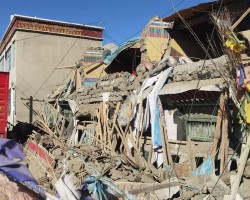Banking Current Affairs
| Environment |
|---|
|
|
|
Why in the News?
A devastating earthquake struck China’s remote Tibet region on Tuesday, killing 126 people and injuring 188 others, according to state media reports. The earthquake also caused tremors in neighboring Nepal’s capital Kathmandu and parts of India. Key Takeaways Earthquake Details: Location: Epicenter: Tingri County, about 80 km north of Mount Everest, near China’s border with Nepal. Tingri is a rural, high-altitude region with approximately 62,000 people. Magnitude: China Earthquake Networks Center (CENC): 6.8 U.S. Geological Survey (USGS): 7.1 Casualties and Damage: Deaths: 126 confirmed as of 7 p.m. Injuries: 188, including 28 in critical condition. Buildings: 3,609 houses collapsed. Responses and Relief Efforts: Rescue Operations: Rescuers worked in freezing temperatures, distributing blankets and aiding the injured. Footage showed rubble-strewn ruins in Tingri. Government Response: Chinese President Xi Jinping called for “all-out search and rescue efforts.” Emergency teams were dispatched to the affected regions. Impact on Neighboring Areas: Nepal: Tremors felt in Kathmandu and areas near Everest. India: Tremors were felt in parts of Bihar, but no injuries or significant damage were reported. Historical Context: The earthquake was the most powerful recorded in a 200-km radius in the last five years, according to CENC. Past incidents: December 2023: A quake in northwest China killed 148 people and displaced thousands. 2014: Over 600 people were killed in Yunnan province, making it one of China’s deadliest quakes. |
|
|
|
What is an Earthquake? |
| >> More Banking Current Affairs |
